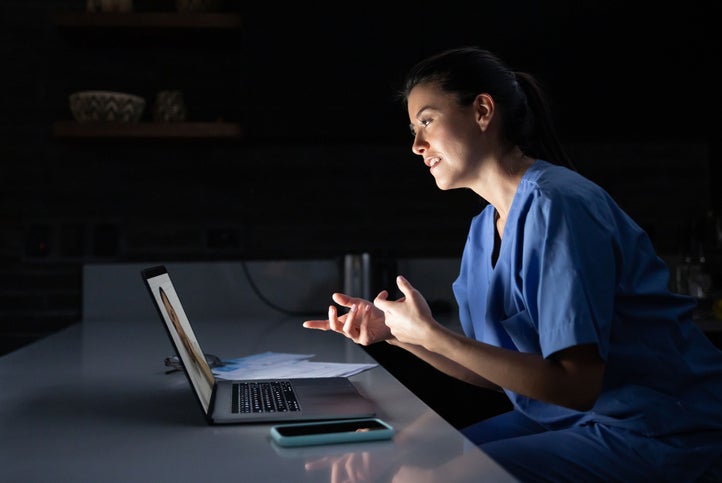
Virtual wards are increasingly being used by the NHS to help relieve the strain on the stretched healthcare system and free up hospital beds – but experts have warned that risks need to be managed as the practice expands quickly.
The NHS treated over 100,000 patients in virtual wards last year, a number that has been growing year on year as the strain on NHS staff increases.
Kaleb Ells, a healthcare content creator, and Shabnam Pervez, thematic analyst at GlobalData, discussed virtual wards within the NHS in a recent podcast from the research company.
“Virtual wards are a way of monitoring patients after they’ve had procedures and have been discharged, as well as a way to stop patients ever having to come into hospital in the first place,” Ells told the podcast.
The virtual wards work with remote tools such as cameras, heart sensors, blood pressure monitors, and more – all of which are transmitted back to the hospital via a wifi connection.
“It will send the data back to a clinical environment so patients can stay in their own homes so that they don’t have to stay in hospital or go there in the first place,” Ells said.
How well do you really know your competitors?
Access the most comprehensive Company Profiles on the market, powered by GlobalData. Save hours of research. Gain competitive edge.

Thank you!
Your download email will arrive shortly
Not ready to buy yet? Download a free sample
We are confident about the unique quality of our Company Profiles. However, we want you to make the most beneficial decision for your business, so we offer a free sample that you can download by submitting the below form
By GlobalDataThis is particularly useful when supporting elderly people, as well as people with acute respiratory problems, to prevent them from catching anything during a long stay in hospital.
However, while virtual wards are becoming more important to the overall healthcare system in the NHS, there are some risks that still need to be considered.
“Virtual wards can mean doctors miss out on symptoms of deteriorating physical health,” Shabnam Pervez, thematic analyst at GlobalData, told the podcast.
Pervez explained that doctors can’t spot subtle signs like the discolouration of fingertips and skin in virtual wards, which could be an indication of deteriorating health that’s missed.
“Patients who have issues with their remote devices may see longer response times than those in a physical setting,” Pervez added, “say if a wearable device fell off in the shower or if the tape started to wear away, it would take longer to have that resolved than if the patient was in a physical setting.”
As technological advancements continue, virtual wards will be able to become more widespread and cost-effective.
Ells believes that it’s important for the NHS to work closely with patients, in order to make sure that patient confidence is kept.
“If patients don’t have faith in the virtual wards the uptake of them will be a lot harder to achieve,” Ells said.





